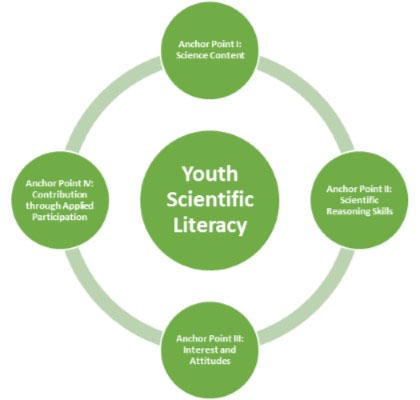4-H links scientific literacy to ANR initiatives
Our Strategic Vision 2025 highlights the importance of accurate, science-based information as a cornerstone in personal decision-making and public policy. The improvement of scientific literacy among the public is a joint, collaborative responsibility shared by multiple ANR initiative groups. The 4-H Youth Development Program has made significant efforts developing and implementing high-quality curricula and programs to address youth scientific literacy, and there are further opportunities to bolster youth learning and involvement by engaging young people across the range of ANR strategic initiatives.
“We would like to expand our work with our colleagues in ANR across the initiatives and statewide programs,” said Martin Smith, UC Cooperative Extension science literacy specialist in Veterinary Medicine Extension and the Department of Human Ecology at UC Davis.
The 4-H Youth Development Program already partners with several strategic initiatives to improve the scientific literacy of youth by giving them authentic opportunities to learn science and do scientific work.
Sustainable Food Systems
Through nutrition and gardening projects, 4-H programs incorporate the Sustainable Food Systems Initiative to improve youth science literacy. The Discovering Healthy Choices curriculum developed through a 2011 ANR Grant is a multi-component, school-based approach to supporting regional agriculture, promoting healthy behaviors, and reducing childhood obesity. Terri Spezzano, UCCE Stanislaus County director and nutrition, family and consumer science advisor, says “Through the Discovering Healthy Choices curriculum, youth learn not only about the nutrition in foods we eat, but also about the connections with agriculture science, native plants and animals available for food; geography; and the variation of fruits and vegetables between countries and cultures. Youth also have the opportunity to grow and eat the produce they learn about. This gives them a well-rounded background in food systems, both local and worldwide.”
Water quality, quantity and security
Efforts are underway to bring water-focused programming to 4-H youth, with opportunities to learn about the water cycle, human interventions in the cycle, the rural-urban interface, and mapping watersheds, and then apply this knowledge through a service-learning project in their community. A variety of resources have been developed, including the There's No New Water! curriculum, to improve youth scientific literacy and at the same time engage youth in real-world issues right at home. Darren Haver, UCCE water quality advisor and director of South Coast REC and Orange County CE, says “The UC ANR Water Quality, Quantity, and Security Initiative Strategic Plan identifies a number of water-related issues facing California. ANR's ability to tackle these issues requires significant investment in research and extension to the citizens of the state. 4-H efforts to improve science literacy in the area of watershed science not only provides youth with the opportunity to engage in a critical local issue, it also expands UC ANR's reach to the youth who will be responsible for developing and implementing water policies in the future.”
Endemic and invasive pests and diseases
ANR has a history of supporting 4-H youth in animal science projects where they care for, breed, grow, show and market their products. A cross-initiative effort is underway to help 4-H youth develop biosecurity practices that will reduce the risk of disease spread. These efforts include publishing the Bio-Security in 4-H Animal Science curriculum, conducting research funded by a 2013 ANR grant (Mitigating Zoonotic and Animal Disease Risks in 4-H Animal Science Projects through Coordinated Education and Research), and planning the inaugural 2015 State Animal Science Symposium.
To get involved, contact your local 4-H youth development advisor and/or youth, families, and communities advisor or a member of the 4-H SET Leadership Team:
- Steven Worker, 4-H Science, Engineering, and Technology coordinator (smworker@ucanr.edu)
- Martin Smith, science literacy specialist (mhsmith@ucdavis.edu)
- Lynn Schmitt-McQuitty, county director and 4-H Youth Development advisor (lschmittmcquitty@ucanr.edu)
- Andrea Ambrose, Development Services (apambrose@ucanr.edu)

